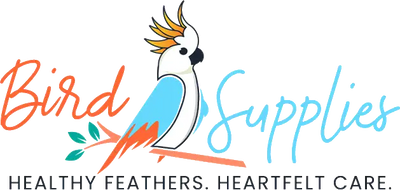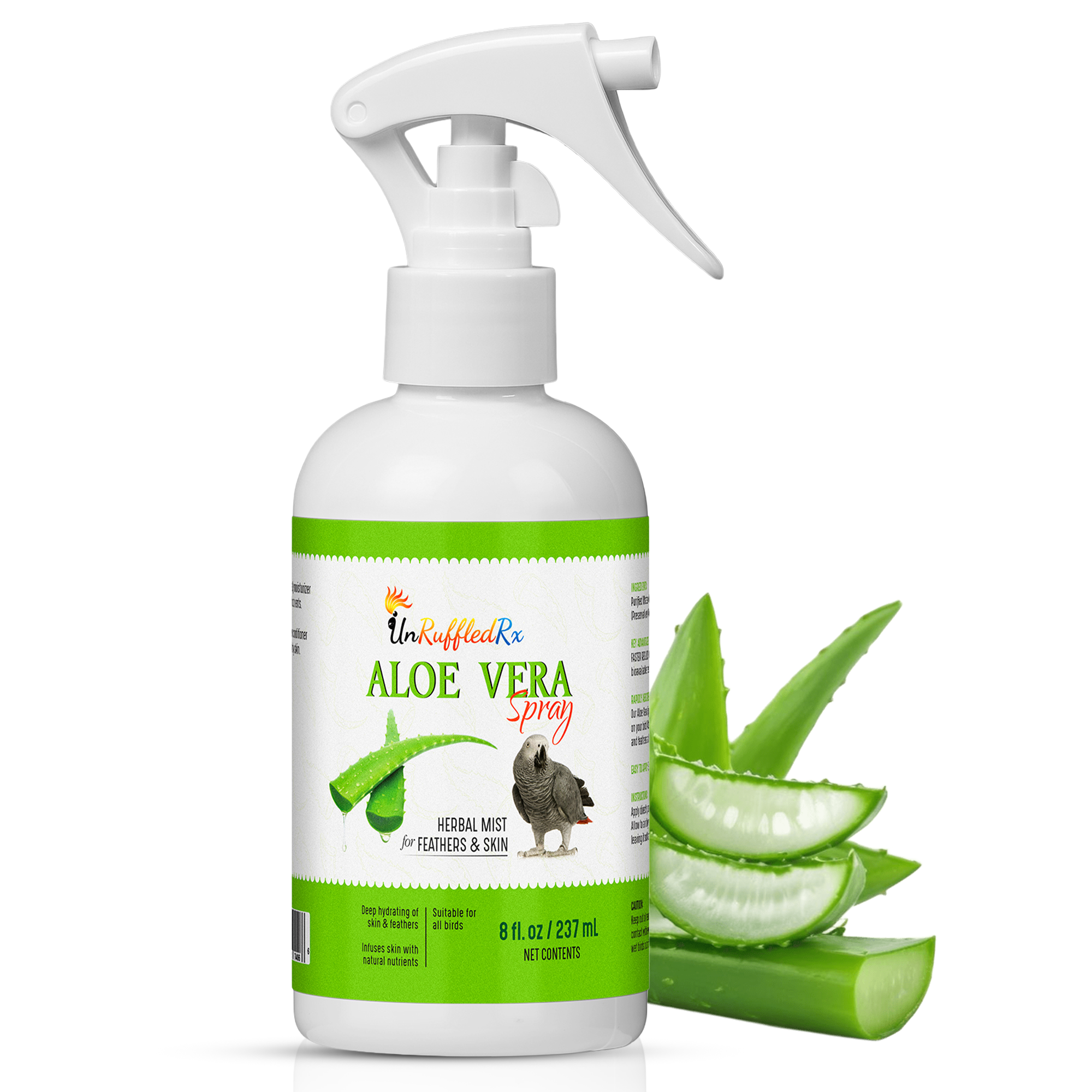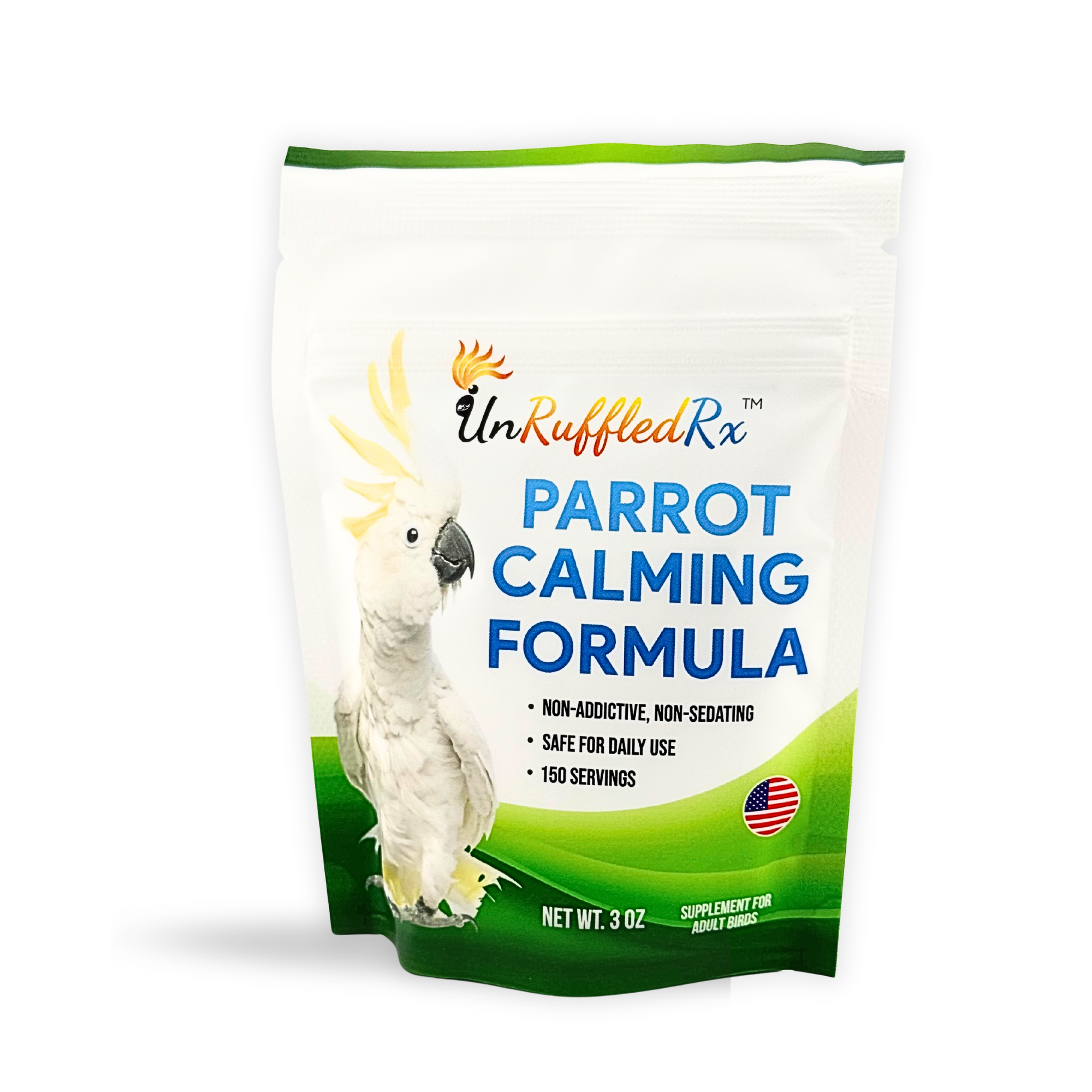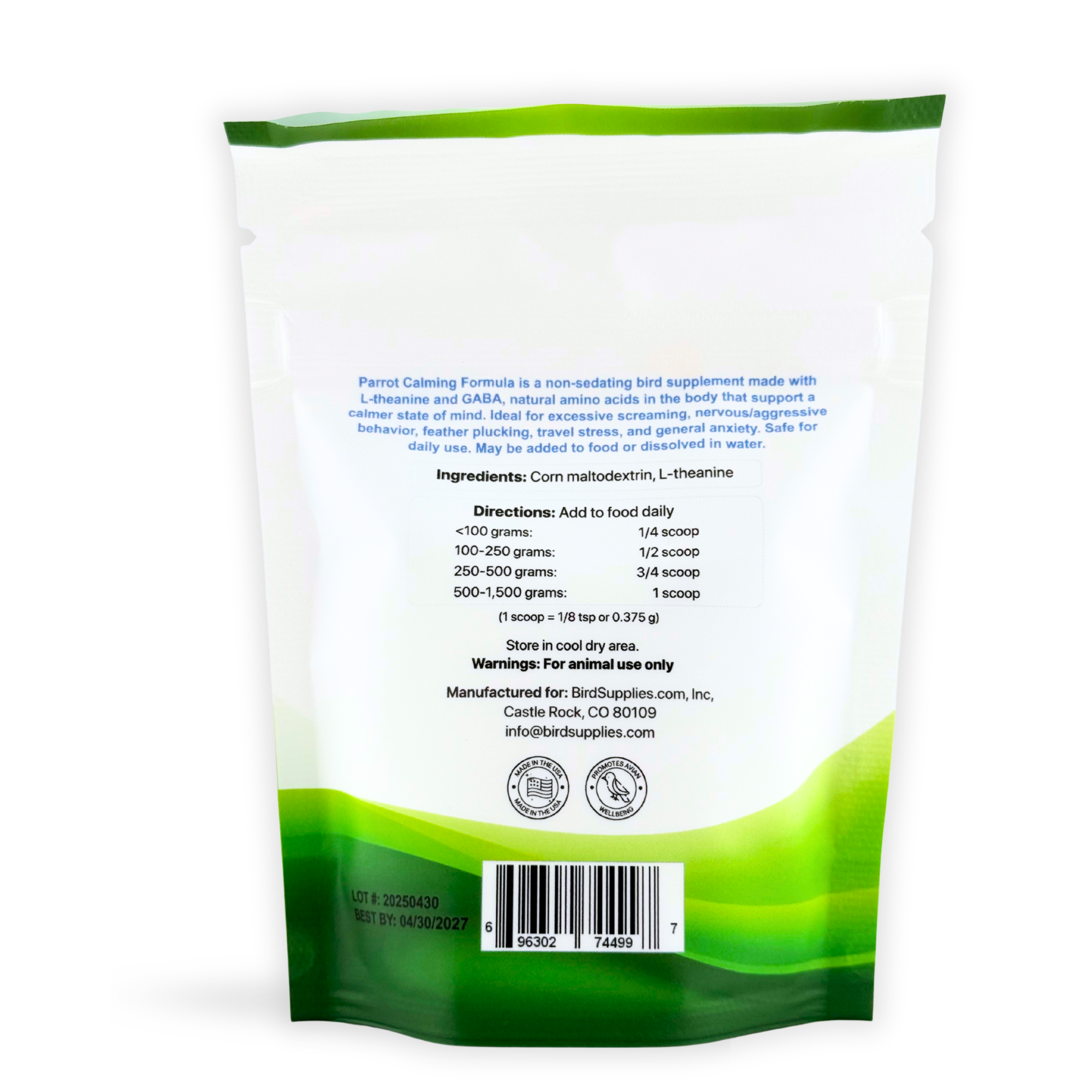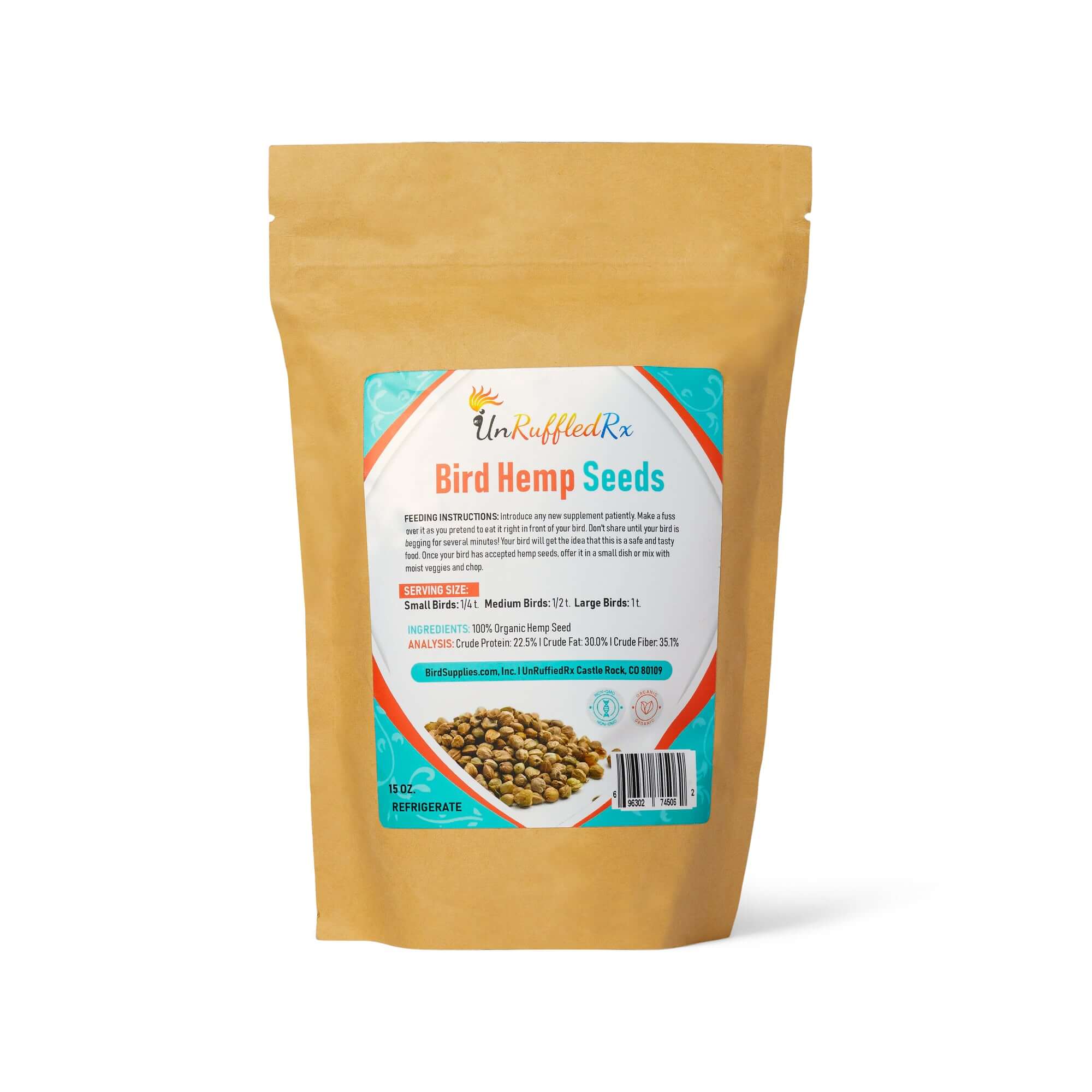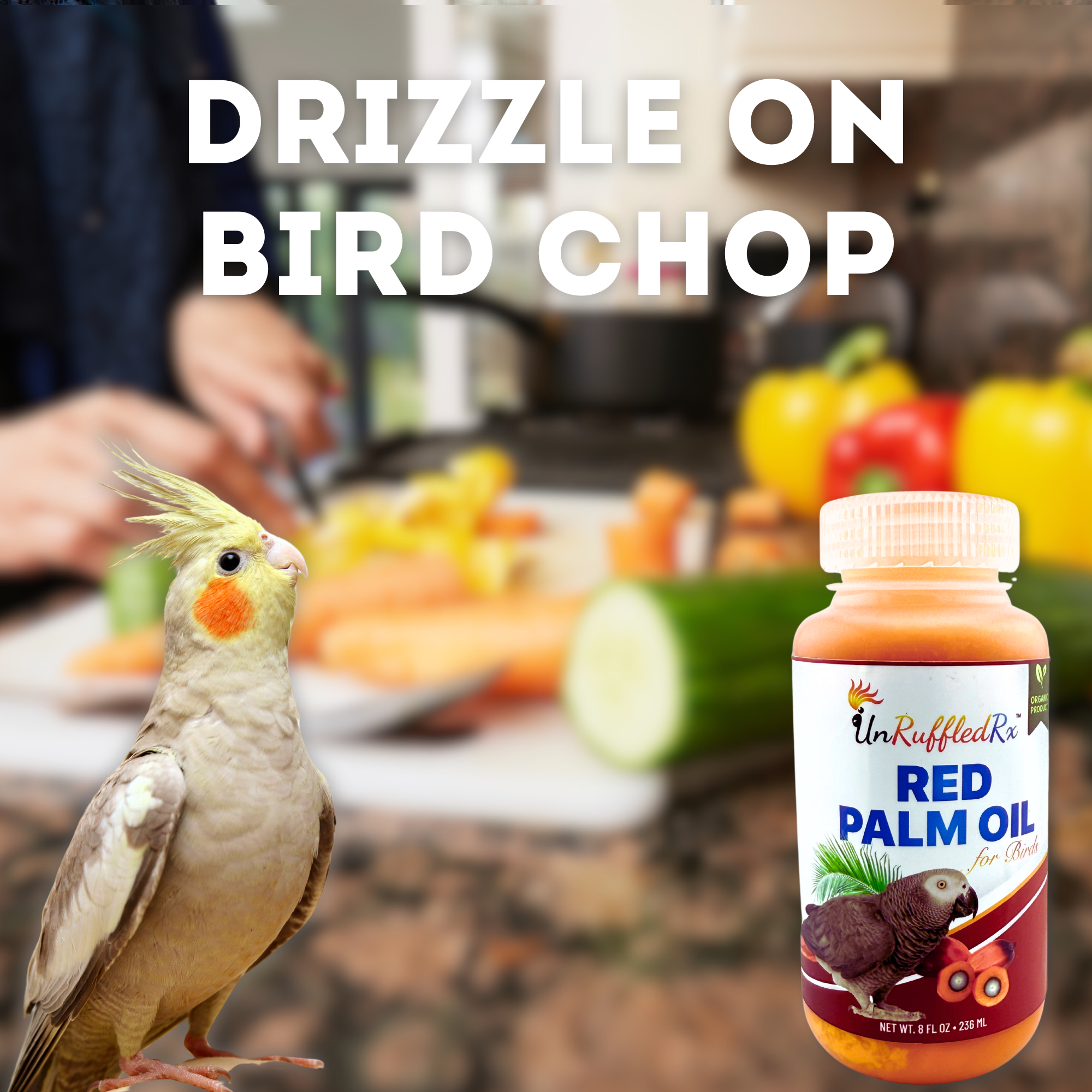- What Bird Anxiety Looks Like—And Why It Matters
- How to Tell if Your Bird Has Anxiety
- Understanding What Triggers Anxiety In Birds
- Case Study: Chicky the Cockatoo
- A Calming Framework That Works For Phobic Birds
- The Power of Avian Enrichment
- Bonus: Behavior Intervention Table
- Conclusion....
Bird anxiety can run deep—especially when your parrot seems truly afraid ofyou. If your bird freezes when you walk by, panics during simple routines, or has started plucking or even self-mutilating, you're likely dealing with more than just “bad behavior.” This is phobic anxiety. And it’s heartbreaking. But here’s the hopeful part: with the right blend of trust-building, gentle behavior training, and wellness support, you can help your bird feel safe again.
This blog breaks it all down in plain, doable steps. You’ll learn how to spot the signs of severe anxiety, uncover hidden triggers, and rebuild your bird’s confidence—without forcing interaction or making things worse. From calming routines and environment tweaks to enrichment and natural remedies, we’ll guide you through proven ways to help even the most anxious bird slowly learn to trust again.
What Bird Anxiety Looks Like—And Why It Matters
Ever feel like your bird is trying to tell you something… but you’re not quite sure what?
Bird anxiety exists on a spectrum, kind of like a 1 to 3 scale.
At level 1, the anxiety is normal. Being animals of prey, birds are prone to being weary. Uour bird might be a little hesitant around something new, like a toy or a visitor. They’re alert but curious, and with a little encouragement or modeling, they bounce back quickly.
Level 2 is more moderate—your bird might show signs of discomfort like backing away, vocalizing, or being reluctant to interact. They’re telling you, “I’m not sure about this,” and need time, distance, or reassurance.
But level 3 is where things get serious. This is phobic anxiety—a full-blown panic response where the bird feels completely unsafe. You’ll see behaviors like flailing, biting, self-mutilation, or trying desperately to flee. At this level, it’s not about being shy—it’s about survival. Recognizing where your bird falls on this scale helps you meet them where they are and avoid pushing them past their breaking point.
Bird anxiety can run deep—especially when your parrot seems truly afraid of you. If your bird panics when you approach, bolts from your hand, or has started plucking or even self-mutilating, you're likely dealing with more than just “bad behavior.” This is phobic anxiety. And it’s heartbreaking.
The root cause usually runs deeper than we think. Many anxious birds come from poor breeding situations, were improperly weaned, or missed out on early socialization. Others may have experienced rehoming, trauma, illness, or the loss of a bonded companion.
Even birds raised with care can develop anxiety after a sudden change, injury, or chronic stress. The good news? With the right mix of trust-building, gentle behavior strategies, and natural calming support, you can help your bird feel safe and connected again.
You're not alone, and there are things you can do.
How to Tell if Your Bird Has High Anxiety
Quick Signs to Watch For
When parrots experience panic-level anxiety, their behaviors often escalate beyond typical stress responses, indicating a state of extreme distress. Recognizing these signs is crucial for timely intervention and support.
✔️ Self-mutilation: Chewing skin or muscle tissue, often more severe than feather plucking
✔️ Thrashing or attempted escape when approached
✔️ Hypervigilance: Constant scanning and exaggerated startle responses
✔️ Trembling or shaking when handled or approached
✔️ Loss of appetite, even for favorite foods
✔️ Excessive vocalizations or sudden silence
✔️ Destructive behaviors like chewing cage bars obsessively
✔️ Avoidance or sudden aggression, especially toward familiar people
👉 Download our printable worksheet: “Signs My Bird Might Be Anxious”
Understanding What Triggers Anxiety in Birds
Common Triggers
Understanding what actually triggers anxiety in our pet birds is the first step toward helping your pet feel safe again. For many anxious birds, the root cause can be traced all the way back to how they were raised. Poor breeding practices and rushed or rough hand-feeding can lead to deep emotional wounds. Babies pulled too early from their parents may miss the chance to learn essential parrot social skills. Without that early foundation of safety and trust, these birds often grow up fearful, reactive, and unsure how to connect with humans—or even other birds.
Understanding Panic Responses
Parrots experiencing phobic-level anxiety aren’t just behaving badly or “overreacting”— they’re having a full-body, biochemical response to fear.
When a trigger appears, their brain releases stress hormones like cortisol and adrenaline into the bloodstream, activating the nervous system and launching the bird into a panic mode. This isn’t something they can think their way out of—it’s a survival reflex. Their body is screaming danger, even if we know they’re safe.
That’s why effective training starts before the panic hits. Our job is to identify what sets off that fight-or-flight reaction and design interactions that stay well below that threshold.
If your bird shuts down, thrashes, bites, or freezes, the session has already gone too far. Instead, we aim to work at a distance and intensity that feels safe to the bird, using what they want—often just space or stillness—as the reward. Little by little, this builds confidence and teaches your parrot that they can feel safe around you.
“To help an anxious bird, first figure out what’s scaring them…”
Case Study: Chicky the Cockatoo

From Panic to Progress
When Jim adopted Chicky, a severely anxious cockatoo, he was heartbroken to see how terrified she was of human presence. Any time he entered the room, she would thrash, scream, and bite at herself. But instead of giving up, Jim leaned in—with compassion and patience.
With guidance from an avian vet and behavior support from Diane Burroughs, Jim learned to recognize Chicky’s triggers and began reshaping her environment.
✔️ He minimized visual and auditory stressors that caused Chicky to chew her legs
✔️ He added calming elements, and created quiet zones where she could retreat.
✔️ He gave her pain and a calming medicines that his vet prescribed.
✔️Most importantly,Jim spent time just being near her—sitting across the room, saying nothing, doing nothing—until she began to feel safe in his presence.
Over weeks and months, Jim worked at Chicky’s pace, slowly closing the distance as she grew more comfortable. With time, Chicky started exploring, engaging, and even accepting gentle interaction. Her panic didn’t disappear overnight, but through steady, supportive routines, she started to feel safe again. Chicky’s story is proof that recovery is possible—with consistency, empathy, and patience.
A Calming Framework That Works For Phobic Birds
Step 1: Create a Safe, Predictable Environment
Place the cage in a low-traffic zone. Use visual barriers. Add enrichment and a cozy hideaway.
Step 2: Honor Their Threshold + Build Trust
Watch body language. Respect their need for space. Start training from a safe distance.
“The goal isn’t to stop the behavior—it’s to build safety.” – James O’Heare
Step 3: Encourage Sleep & Routine
A consistent sleep routine is essential for supporting an anxious bird. Parrots require 10 to 12 hours of uninterrupted, dark sleep each night to regulate their nervous system and maintain overall health. Insufficient sleep can lead to heightened stress responses, making birds more susceptible to anxiety-related behaviors such as screaming, biting, or feather plucking.
Establishing a predictable sleep schedule helps in stabilizing your bird's circadian rhythm, which in turn supports hormonal balance and reduces stress. Creating a quiet, dark, and comfortable sleeping environment—possibly with the use of a sleep cage or cover—can signal to your bird that it's time to rest, promoting relaxation and reducing nighttime disturbances. Over time, this routine can contribute to a calmer, more secure bird.
Step 4: Support Mood With Natural Calming Options & Healthy Foods
✔️ Bird Tea: Herbal support that soothes from the inside out.
✔️ Calming Formula: Ideal for high-stress times (consult your vet).
✔️ Bird Hemp: Nutritional support with calming properties.
Mental Stimulation Eases Stress
Foraging toys, puzzle feeders, music, and even supervised outdoor time can calm your bird. These activities tap into your parrot’s natural instincts, offering both mental and emotional relief.
3 Easy DIY Enrichment Ideas
1. Paper-Wrapped Treats: Take a small piece of clean, bird-safe paper and wrap a few favorite treats inside. Twist the ends like a candy wrapper. Toss it in the foraging tray or hide it around the cage to encourage exploration.
2. Muffin Tin Puzzle with Balls: Place a few treats in the cups of a muffin tin and cover each one with bird-safe balls or crumpled paper. Your bird will have to move the items to get to the reward—simple but effective brain work.
3. Hanging Veggie Kabobs (DIY Foraging Toy): Use a stainless steel skewer or bird-safe string to thread chunks of fresh veggies like bell peppers, zucchini, or leafy greens. Hang it in the cage at eye level to turn snack time into playtime. This DIY Foraging Toy encourages your bird to nibble, shred, and explore, all while getting important nutrients and stimulation.

Bonus: Behavior Intervention Suggestinos
| Behavior | Common Response | Better Response |
|---|---|---|
| Screaming | Yell back |
|
| Biting | Yell at the bird, scold the bird, put the bird in its cage |
|
| Skittish | Worry, try to console the bird, ignore the bird |
|
| Plucking | Worry, console, punish with collar or squirt bottle |
|
You're Not Alone—And This Is Fixable
Helping a bird with phobic anxiety takes time, empathy, and a steady hand—but it *can* be done. When you shift from managing behavior to understanding fear, everything changes. Small, calm interactions start to rebuild trust, and those tiny moments become the foundation for lasting change.
You don’t have to do this alone. Our calming supplements, enrichment tools, and behavior guides were made for birds just like yours. Whether it’s soothing tea, a trusted calming formula, or a new way to connect through enrichment, we’ve got what you need to create a safer, more peaceful world for your bird.
Ready to support your bird’s recovery? Explore our Calming Collection now and take the first step toward a calmer, happier companion.
How to Read Parrot Body Language
Why Parrots Need Sleep Cages
10 DIY Enrichment Ideas for Pet Birds
Related Posts:
2 Important Things You Need To Know To Help Your Bird With Separation Anxiety
Natural Solutions For Parrot Anxiety
Understanding Bird Stress: How To Calm Your Bird Down
References:
Friedman, S. G. (n.d.). BehaviorWorks.org. Retrieved from https://www.behaviorworks.org
Heidenreich, B. (2005). Good bird! A guide to solving behavior problems in companion parrots. Cedar Ridge Publishing.
Lamb, S. (n.d.). Author profile. In LafeberVet. Retrieved from https://lafeber.com/vet/author/stephanie-lamb/
Luescher, A. U. (Ed.). (2006). Manual of parrot behavior. Blackwell Publishing.
Luescher, A. U., & Green Linden, P. (2006). Behavioral development of psittacine companions: Neonates, neophytes, and fledglings. In A. U. Luescher (Ed.), Manual of parrot behavior (pp. 93–112). Blackwell Publishing.
Luescher, A. U., & Wilson, L. (2006). Parrots and fear. In A. U. Luescher (Ed.), Manual of parrot behavior (pp. 225–232). Blackwell Publishing.
Link to this blog
https://birdsupplies.com/blogs/news/understanding-bird-anxiety
Diane Burroughs, LCSW, brings over 30 years of experience helping bird lovers build stronger, healthier bonds with their parrots. With a foundation in psychotherapy and Applied Behavior Analysis (ABA), Diane combines proven behavioral science with simple, real-life strategies anyone can use. Through her books, behavior consultations, and UnRuffledRx parrot wellness products, she’s dedicated to helping real bird owners create trust, confidence, and a lifetime of positive experiences with their feathered companions.
Diane's products been featured in the Journal of Avian Medicine and Surgery and at ExoticsCon, a national conference for exotic animal veterinarians. Her bird collars and supplements are trusted by avian vets and stocked in vet clinics across the U.S. With thousands of individualized behavior plans under her belt, Diane’s mission is simple: to help parrots and their people thrive together.
TAGS: #BirdAnxiety #ParrotCare #BirdBehavior
SHARING IS CARING! 📣
Love what you read? Help spread the word on Facebook & Instagram 🌟
💬 Leave a comment below and let us know your thoughts!
